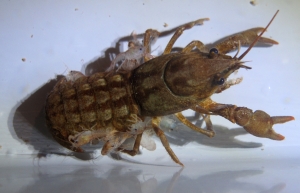Iberian Peninsula Native Crayfish are divided into two distinct genetic groups
Researchers at the Department of Genetics at the Complutense University of Madrid conducted a genetic study of native Crayfish (Austropotamobius pallipes) which show the division into two genetic groups in the Iberian Peninsula. This work, among others, will be presented and discussed at the next International Congress of the International Society Astacology that will be held at the Royal Botanical Garden of Madrid between 5 and 8 September.
The DNA study of 240 crayfish in the Iberian Peninsula reveals that his presence in our rivers back between 25,000 and 50,000 years ago and there are two distinct genetic groups, one in the north and the other centre.
The scientists obtained 240 crabs from the basins of major rivers and ten crustaceans Spanish River Arno (Italy) as external reference, to see if there are genetic links between the populations of both countries. DNA was extracted from tweezers (which regenerate crabs) and, once achieved, were returned alive to their rivers of origin.
Unlike previous studies, which analyzed in a single molecular marker, this time have been studied both located in the mitochondrial genome -a fragment of gene encoding the protein cytochrome oxidase subunit I and 16S ribosomal RNA -.
In the northern group populations of Basque forests and the Cantabrian Mountains were identified, and in the middle group, the populations of the Ebro basin are distinguished from the rest.
The study also shows that most of the Iberian populations are small and are consanguineous. It is important to maintain the protection of the species (the native crayfish is included in the Spanish Catalogue of Endangered Species) because there are only a thousand small populations on the peninsula.

















